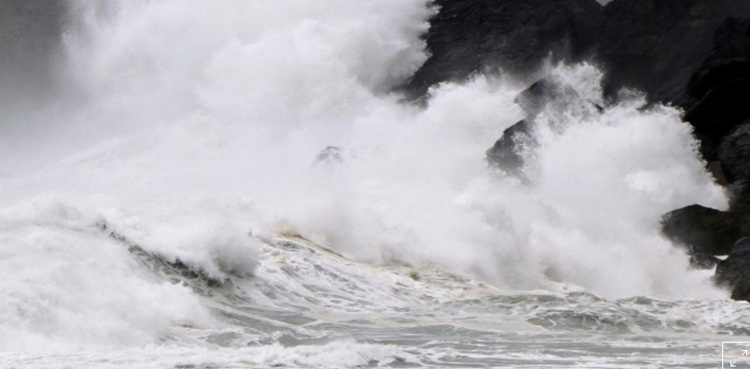
HONG KONG: Typhoon Saola swept across southern China on Saturday after tearing down trees and smashing windows in Hong Kong, although the megacity avoided a feared direct hit from one of the region’s strongest storms in decades.
Tens of millions of people in the densely populated coastal areas of southern China had sheltered indoors on Friday ahead of the storm.
Saola had triggered Hong Kong’s highest threat level on Friday evening — issued only 16 times since World War II — and registered winds of around 210 kilometres per hour at its peak.
It was downgraded before dawn on Saturday as the typhoon passed the city and tracked towards coastal areas of mainland China, with no reported casualties and far less damage than created by 2018’s powerful Typhoon Manghut.
But authorities warned people to remain on alert, with Saola still packing sustained winds of 145 kilometres per hour at its centre, creating a storm surge that caused rough swells around waterfront areas.
AFP journalists saw multiple fallen trees and scaffolding strewn across Hong Kong roads, broken windows, and leaking facades around major buildings, while local media reported that solar panels had been ripped off rooftops.
Typhoon Mangkhut injured more than 300 people when it slammed into the city in 2018, shredding trees and unleashing floods.
In mainland China, it killed six people and impacted the lives of more than three million others.
Hong Kong’s airport authority announced Saturday it would gradually resume flights, after mass cancellations and delays the day before.
Neighbouring gambling hub Macau announced the reopening of casinos that had been closed for a day — a rarity — due to the severity of Saola.
Shun Chi-ming, former director of the Hong Kong Observatory, said it was “lucky” the strong winds did not affect Hong Kong’s urban areas.
“The eyewall structure at Saola’s centre was clearly disrupted… and the strongest parts only skirted the south of Hong Kong,” he said in a post on Facebook.
Saola made landfall early Saturday in the Chinese coastal city of Zhuhai, which is part of the Pearl River Delta — a low-lying region prone to massive storms that includes Hong Kong, Macau and Guangdong province.
China’s national weather office had warned a day earlier that Saola “may become the strongest typhoon to make landfall” since 1949.
In anticipation, Guangdong province evacuated more than 780,000 people from high-risk areas and returned 80,000 fishery vessels to harbour for shelter, while schools across 13 cities postponed the start of the semester.
Authorities in eastern Fujian province also moved more than 100,000 people to safer ground.
Across the South China Sea on Saturday, another typhoon, Haikui, tracked rapidly towards Taiwan, where authorities raised land and sea warnings, though the impact was expected to be mild.
Southern China is frequently hit in summer and autumn by typhoons that form in the warm oceans east of the Philippines and then travel west.
Climate change has made tropical storms more unpredictable while increasing their intensity, bringing more rain and stronger gusts that lead to flash floods and coastal damage, experts say.
from ARY NEWS https://ift.tt/xf4Isal
via IFTTT

0 Comments